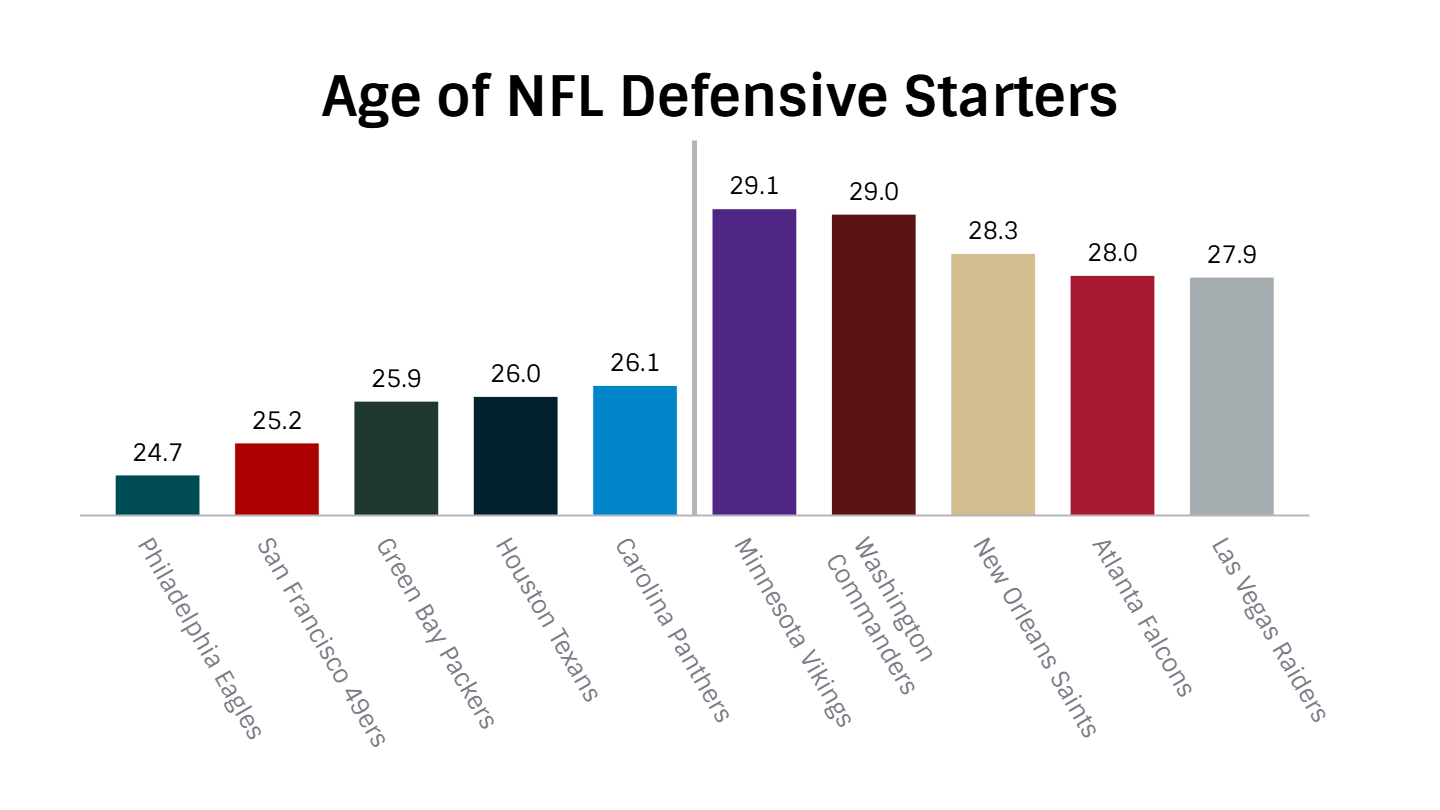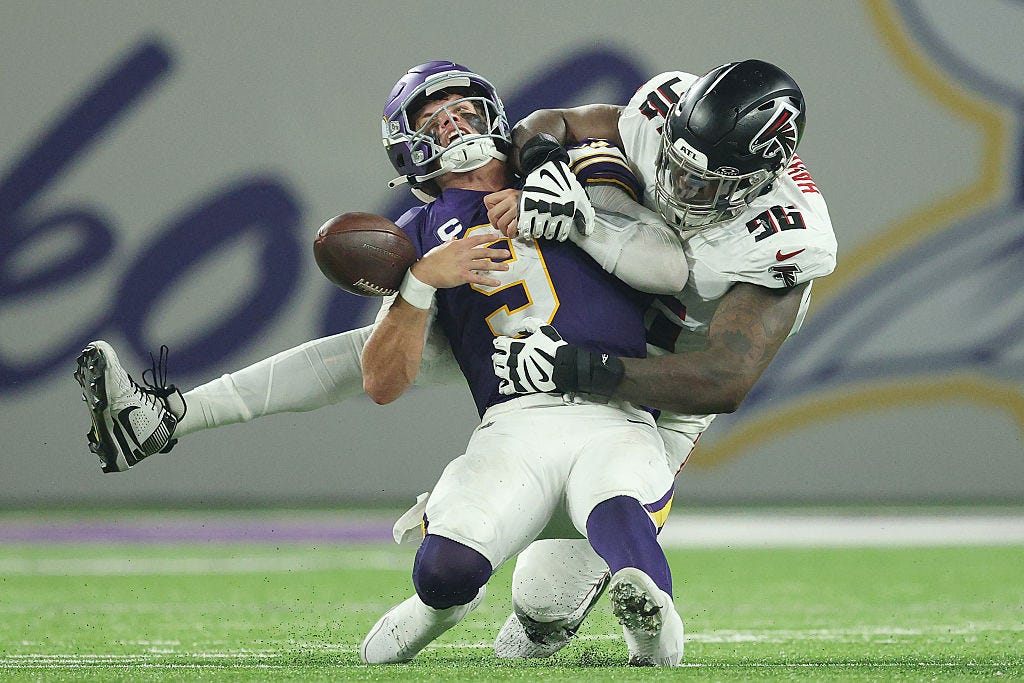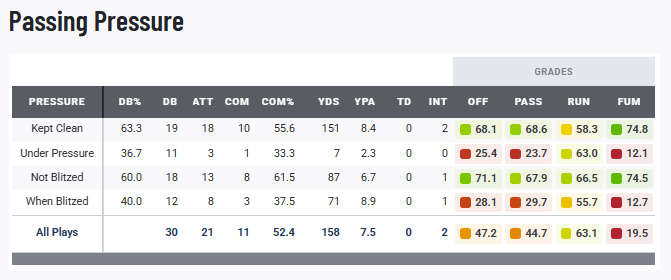Vikings Falling to 1-1 is More Than About Record — It's About Purpose
The Minnesota Vikings fell to 1-1 after a loss to the Atlanta Falcons. In a vacuum, that's not significant. But in context, it brings into question the Vikings' plans for the season.
What is the point?
Not the point of being a football fan or even a Vikings fan — we’ve covered that before — but rather, of the season.
Are the Vikings producing a placeholder season for a young quarterback or are they mounting a legitimate effort at winning a Super Bowl?
Ostensibly, with a first-year quarterback, one imagines that the season is for building a skill set, a foundation that can virtually guarantee long-term results. McCarthy is one of the youngest quarterbacks in the NFL — even younger than almost every quarterback drafted in the 2025 NFL draft; of the 13 quarterbacks selected in late April, only two — Jaxson Dart and Quinn Ewers — were born after McCarthy.
With this in mind, one has to be cautious about making long-term proclamations about the progress of the quarterback. He has less experience than others and more neuroplasticity.
At the same time, the Vikings jettisoned a quarterback who helped lead them to a 14-3 record the previous season and a playoff berth. While it’s fair to wonder if Sam Darnold had the confidence to manage big games like he would need to in a repeat playoff run, it’s also fair to wonder if it’s fair to treat a quarterback with no NFL snaps coming off of an injury as a win-now starter.
And the Vikings seemingly did treat the team like it was an immediate threat to repeat. They have the oldest defense in the league and are, generally, a team stocked with veterans and experience.
Except at quarterback.

The Vikings are so invested in the season, in fact, that their 2025 cash obligations exceeded every other team in the league and were so significant that the Vikings might have run up against their cash budget for the year.
And though Minnesota has reasonable cap space for the remainder of the 2025 season, they have the least amount of cap space for 2026, with negative $53 million projected for next year.
Much of that will be cleared up through restructures and the occasional cut, but it’s also a clear signal that they are invested in this season more than the future.
And, through two games — a fleetingly small sample in a sport whose season only exists in small samples — it’s been worrisome. In the third quarter, commentator Cris Collinsworth put it succinctly: “We’ve seen this offense be bad for six quarters and be good for one quarter.”
That didn’t change in the fourth quarter. There’s little on-field play to look to in order to argue that the Vikings are ready to take on the division, much less the conference.
J.J. McCarthy Struggles
McCarthy looked out of sorts the entire game. It is fair to wonder about the pressure he was under during the game, especially with an in-game injury to center Ryan Kelly and another to left tackle Justin Skule, who only started the game because of an existing injury to Christian Darrisaw.
Indeed, the pressure numbers look bad; McCarthy was under duress on 36.7% of his snaps. But, importantly, he was holding on to the ball for 3.21 seconds per dropback, which would have been the longest time to throw over a full season last year.
Even more alarming than that is that McCarthy only had one pass attempt under 2.5 seconds until the final drive against the Falcons. It was a completion for two yards. With just 4.7 percent of his passes running under that threshold, McCarthy was functionally never on time.
Alarmingly, McCarthy was still doing this while blitzed. Compare his time to throw versus the blitz in this game against the quarterbacks who held on to the ball the longest last year.
That is not a product of offensive design. Though the Vikings emphasize explosive plays and explicitly ask their quarterbacks to hold on to the ball longer than most offenses do, there are still a sizable proportion of passes that fall below 2.5 seconds.
Last year, Darnold ranked in the top five for longest time to throw and still threw the ball faster than 2.5 seconds on 30.8 percent of his passes.
In 2023, with three different quarterbacks taking significant snaps, the Vikings ranked 31st in the league in proportion of passes leaving the quarterback’s hand in under 2.5 seconds at 42.2 percent.
The pressure was a problem amplified by a makeshift offensive line, but the cause was primarily the young quarterback. Like many problems, this is fixable. How quickly it will be fixed, if it is fixed at all, is another question.
McCarthy, despite the awful production numbers, was largely accurate in the first half. With a 72.7 percent completion rate, McCarthy exceeded the completion rate one would expect a quarterback to have given the depth of his throws by 8.2 percent (also known as a CPOE of +8.2).
On average, in the first half, he threw 11.1 yards past the line of scrimmage, an extreme depth that would rank first overall in a typical season. But a pick — a product of late timing, Jalen Nailor’s lacking strength at the catch point and Bobby Bowman Jr.’s incredible skill — tanked his production.
McCarthy didn’t handle the operation well when not throwing the ball. He took six sacks, only one of which came in the under-2.5 second window. Even that sack was a protection error, something the quarterback typically takes responsibility for. An unblocked edge rusher on a non-blitzing play shouldn’t happen.
One can manage reasonable offensive production with 10.7 yards per passing attempt. Unfortunately, that wasn’t in the cards; the second half wouldn’t go nearly as “well.”
Keep reading with a 7-day free trial
Subscribe to Wide Left to keep reading this post and get 7 days of free access to the full post archives.




